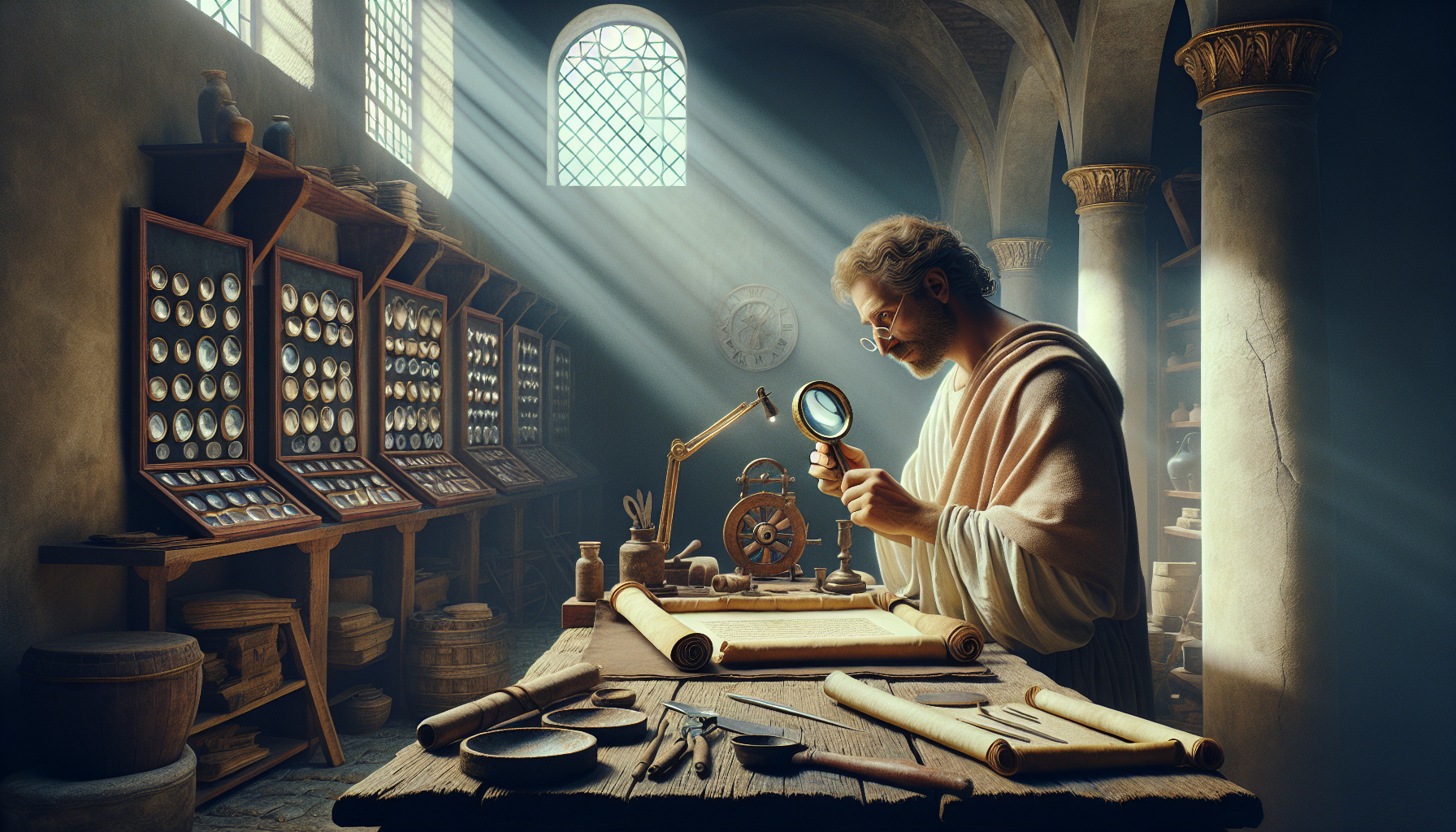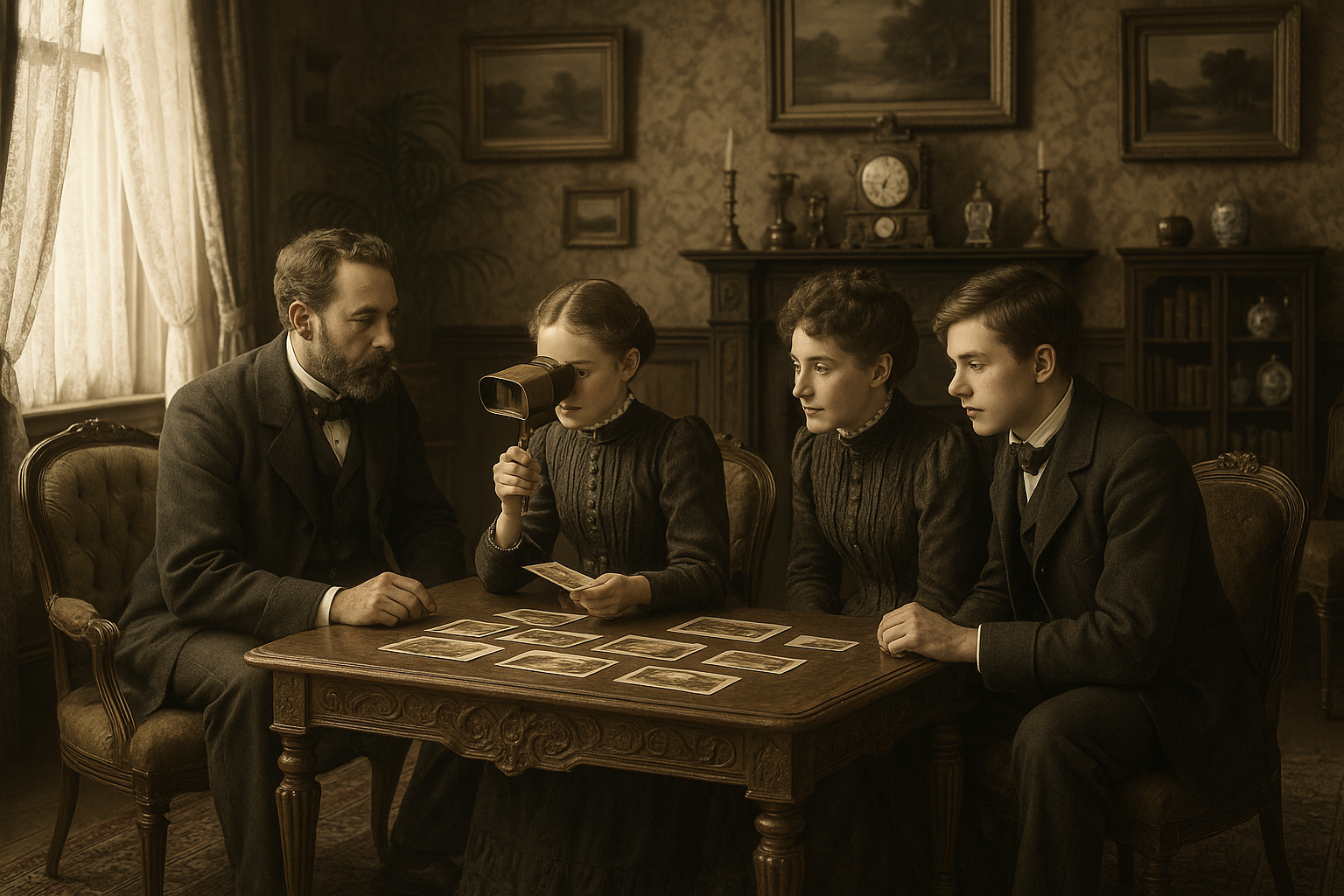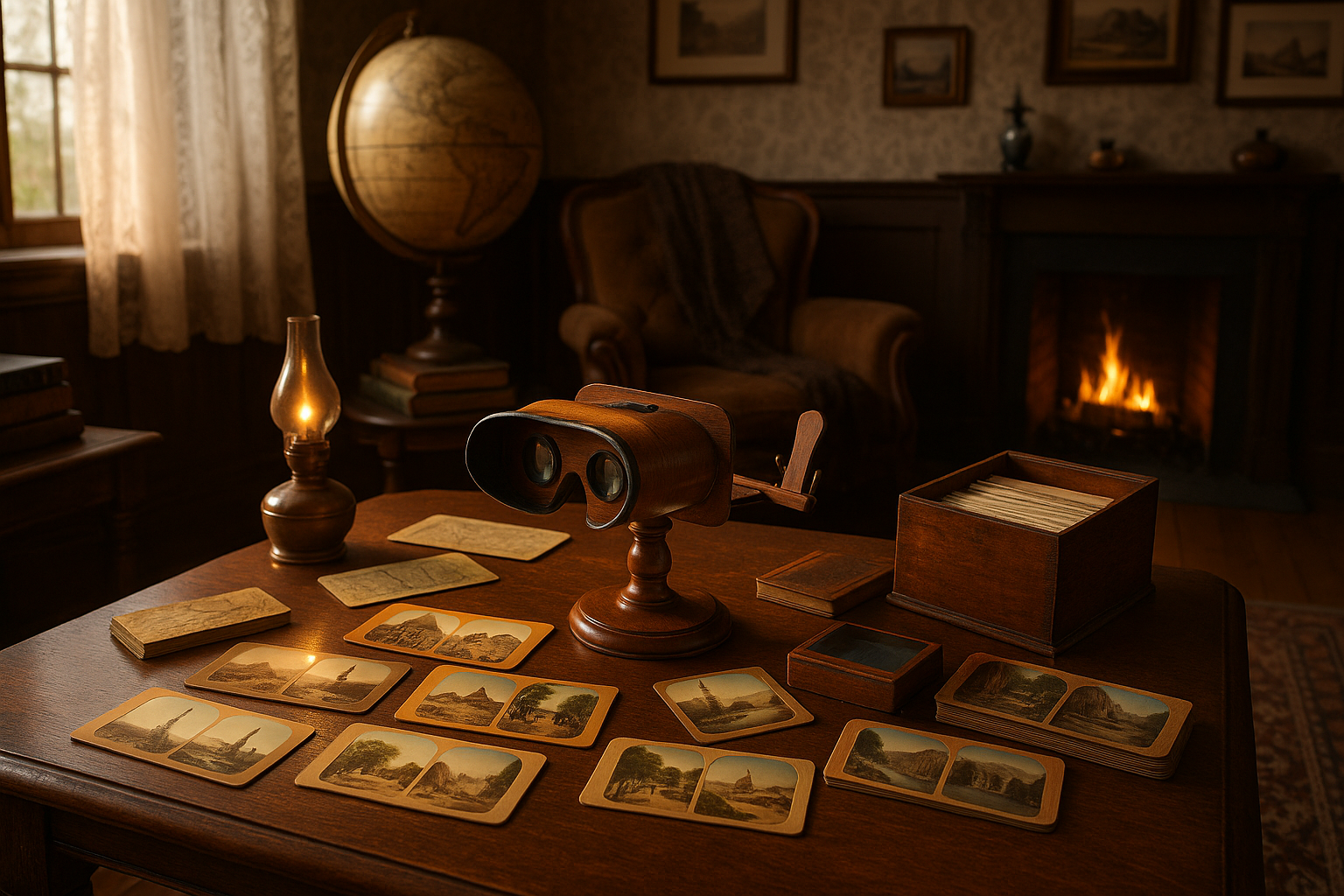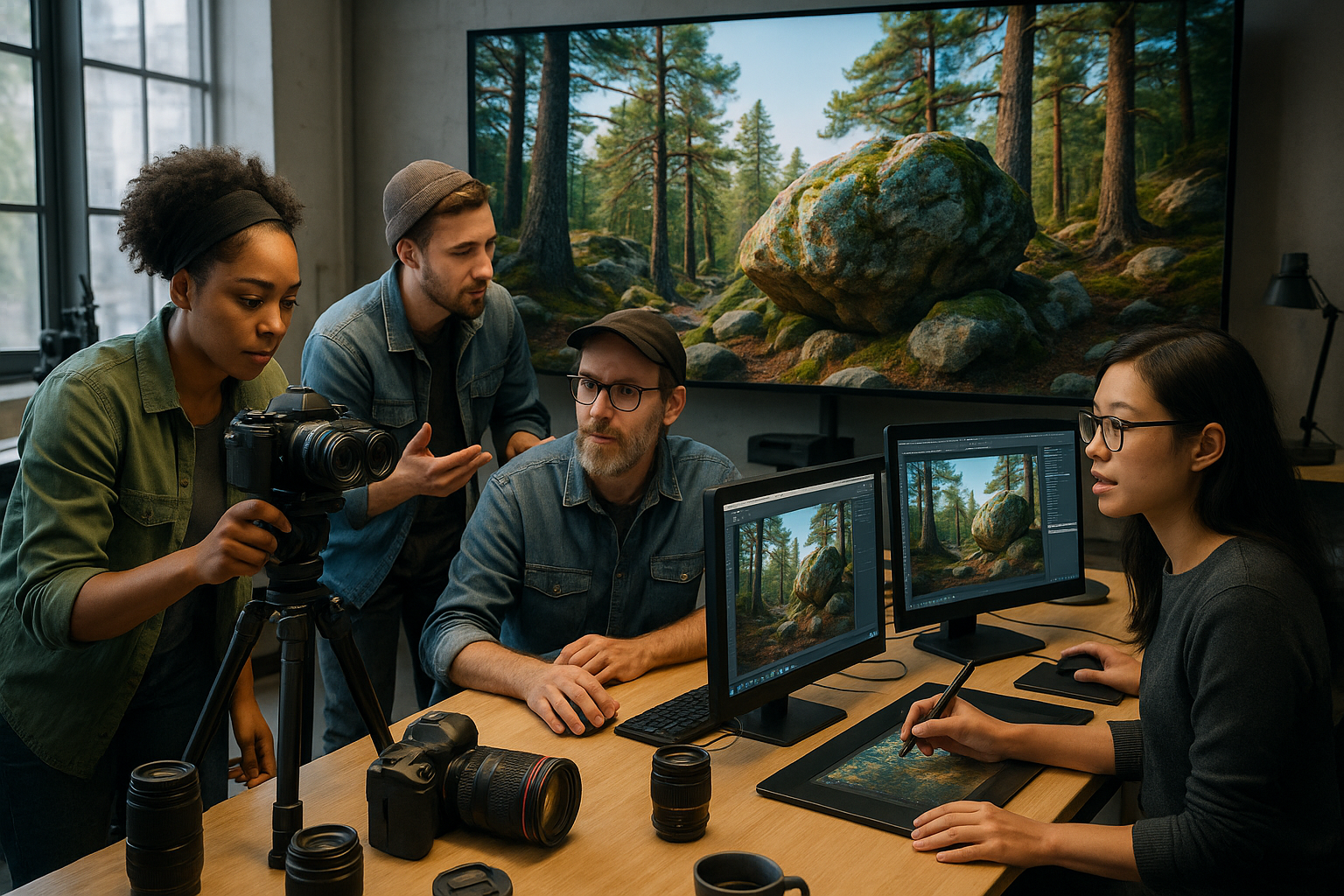In the vast tapestry of human history, certain innovations stand out as remarkable milestones that have shaped the trajectory of our civilizations. Among these, the technological feats of the ancient Romans continue to intrigue and inspire us. While we often marvel at their architectural grandeur and engineering prowess, there’s an often-overlooked yet fascinating aspect of Roman ingenuity that deserves our attention: their sophisticated use of magnifiers. These early optical devices, though primitive by today’s standards, played a crucial role in enhancing vision and unlocking new perspectives in the Roman Empire. 🏛️🔍
Imagine living in a time where the world was a kaleidoscope of vibrant cultures, bustling markets, and grand amphitheaters, yet your ability to fully appreciate the intricate details was hindered by the limitations of human sight. The ancient Romans, ever the innovators, sought to bridge this gap. Through the clever manipulation of glass and crystal, they developed magnifiers that enabled them to peer deeper into the mysteries of both the natural and man-made worlds. These devices were not mere curiosities; they were essential tools for scholars, artisans, and everyday citizens alike, aiding in tasks ranging from crafting exquisite jewelry to studying the stars.
In this exploration of ancient Roman magnifiers, we will delve into the origins and evolution of these intriguing devices. We’ll uncover how Roman glassmakers harnessed their skills to create lenses that magnified objects, offering glimpses of a world previously unseen. We will also examine the broader cultural and scientific implications of these tools, exploring how they contributed to advancements in fields such as medicine, astronomy, and art. Furthermore, we’ll consider the impact of Roman magnifiers on future generations, tracing the legacy of these early optical instruments through the Middle Ages and into the Renaissance.
Join us on a journey through time as we unveil the wonders of ancient Roman magnifiers, celebrating their role as silent witnesses to an empire’s insatiable curiosity and relentless pursuit of knowledge. From the bustling streets of Rome to the serene libraries of Alexandria, these magnifiers were indispensable in shaping the Roman worldview, offering a clearer vision of both the microcosm and the macrocosm. As we peel back the layers of history, prepare to be captivated by the ingenuity and foresight of a civilization that continues to leave an indelible mark on our collective consciousness. 🌟
The Historical Context of Ancient Roman Magnifiers
The Roman Empire, renowned for its remarkable achievements in architecture, law, and warfare, also made significant strides in the realm of science and technology. Among the various innovations that emerged during this time were magnifying devices, which played a crucial role in enhancing vision for various practical and intellectual purposes. As we delve into the intricacies of these ancient optical tools, it becomes evident that they were not mere curiosities, but rather essential instruments that contributed to the flourishing of Roman culture and intellect.
In the vast expanse of the Roman Empire, which stretched from the British Isles to the Middle East, the necessity for magnification became apparent in various fields. Whether it was the meticulous work of artisans and craftsmen or the scholarly endeavors of philosophers and physicians, the ability to enhance one’s vision was invaluable. The Roman magnifiers were primarily made from glass, a material that the Romans had mastered in terms of production and manipulation. These early lenses, often referred to as “burning glasses,” were used not only to start fires through concentrated sunlight but also to enlarge objects for closer examination.
The cultural and intellectual climate of the Roman Empire fostered an environment where the pursuit of knowledge was highly valued. This environment was ripe for scientific inquiry and experimentation, leading to advancements in optics. Scholars such as Seneca and Pliny the Elder documented the use of magnifying glasses, indicating a widespread awareness and utilization of these tools. The integration of magnifiers into Roman society reflects a broader trend of innovation and adaptation, where ancient technologies were continually refined and improved to meet the evolving needs of the empire.
The Construction and Design of Roman Magnifiers
Understanding the construction of Roman magnifiers requires an appreciation for the craftsmanship and ingenuity of ancient Roman artisans. These magnifying devices were typically crafted from blown glass, a technique that involved inflating molten glass into a bubble and then shaping it into the desired form. The ability to manipulate glass into a lens was no small feat, requiring precision and skill that had been honed over generations.
Roman magnifiers varied in size and shape, with some designed for specific tasks such as reading small text or inspecting fine details in artwork. The lenses were usually convex, a shape that allowed light to converge and provided a magnified view of objects. This understanding of basic optical principles was indicative of the Romans’ sophisticated approach to science and technology. The design of these lenses was not only functional but also aesthetically pleasing, often incorporating decorative elements that reflected the artistry of the period.
The durability and clarity of Roman magnifiers were enhanced by the quality of the glass and the techniques used in their production. The Roman glassmakers were adept at creating glass that was both clear and strong, ensuring that the magnifiers could withstand regular use without significant wear. This attention to detail and quality control was a hallmark of Roman manufacturing and contributed to the widespread adoption and success of their optical devices.
Materials and Techniques
The materials used in the construction of Roman magnifiers were carefully selected to optimize their optical performance. Glass, the primary material, was valued for its transparency and malleability. The Romans developed advanced techniques for producing glass, including the addition of various minerals to enhance its properties. For instance, adding manganese dioxide helped decolorize the glass, making it clearer and more effective as a magnifying lens.
The process of shaping and polishing the lenses was equally important in ensuring their efficacy. Artisans employed a variety of tools and methods to grind and polish the glass surfaces, achieving the desired curvature and smoothness. This meticulous craftsmanship was crucial in minimizing distortions and maximizing the magnifying power of the lenses.
The Practical Applications of Roman Magnifiers
Roman magnifiers served a wide range of practical applications across different sectors of society. In the realm of art and craftsmanship, these devices were indispensable for tasks that required precision and attention to detail. Artisans used magnifiers to inspect and refine intricate designs, ensuring the highest quality in their work. This was particularly important in the production of jewelry, mosaics, and engraved metalwork, where even the slightest imperfection could compromise the final product.
In medicine, magnifiers played a crucial role in the diagnosis and treatment of various conditions. Roman physicians utilized these tools to examine wounds, skin conditions, and other ailments with greater clarity and accuracy. This enhanced vision allowed for more effective medical interventions and contributed to the advancement of Roman medical knowledge. The use of magnifiers in medical practice is documented in the writings of several ancient authors, highlighting their significance in this field.
Beyond their practical applications, magnifiers also held symbolic and philosophical significance in Roman culture. They were seen as tools that enabled the pursuit of knowledge and the exploration of the natural world. The ability to see beyond the limitations of human vision was viewed as a metaphor for intellectual curiosity and the quest for understanding. This philosophical dimension of magnification is reflected in the writings of Roman thinkers, who often used optical metaphors to illustrate concepts of perception and enlightenment.
Table: Applications of Roman Magnifiers
| Field | Application | Impact |
|---|---|---|
| Art and Craftsmanship | Inspecting fine details in artwork, jewelry making | Enhanced precision and quality |
| Medicine | Examining wounds and conditions | Improved diagnostic accuracy |
| Philosophy | Symbolic tool for intellectual exploration | Encouraged pursuit of knowledge |
The Evolution of Optical Technology in Ancient Rome
The development of magnifying devices in ancient Rome was part of a broader trend of technological advancement that characterized the empire. This era witnessed significant progress in various scientific fields, driven by a culture that valued innovation and experimentation. The evolution of optical technology was marked by a gradual refinement of techniques and a deepening understanding of the principles of light and vision.
Roman scholars and inventors were instrumental in advancing optical knowledge, building upon the work of earlier civilizations such as the Greeks and Egyptians. They conducted experiments to explore the behavior of light and its interaction with different materials, leading to a more comprehensive understanding of optics. This scientific inquiry was supported by the patronage of wealthy individuals and institutions, who recognized the potential of optical technologies to enhance both practical and intellectual pursuits.
Video Recommendation
To gain a deeper understanding of the impact of Roman magnifiers and their role in the advancement of optical technology, watch the insightful video below:
“The Science of Optics in Ancient Rome” by Historical Insights Channel
Continuing Influence of Ancient Roman Magnifiers
The influence of Roman magnifiers extends beyond the boundaries of ancient history, leaving a lasting imprint on subsequent generations. The principles of magnification that were refined and utilized by the Romans have continued to shape the development of optical devices throughout history. From the creation of eyeglasses in the Middle Ages to the invention of microscopes and telescopes in the Renaissance, the legacy of Roman magnification is evident in the evolution of optical technology.
The Roman approach to science and technology, characterized by a blend of empirical observation and theoretical inquiry, served as a model for later scientific endeavors. This approach fostered a spirit of curiosity and exploration, encouraging subsequent cultures to build upon Roman achievements and push the boundaries of human knowledge. The enduring legacy of Roman magnifiers is a testament to the empire’s commitment to innovation and its pivotal role in the advancement of science.
- Explore the craftsmanship and design of Roman magnifiers through archaeological studies.
- Understand the cultural and philosophical significance of magnification in Roman society.
- Investigate the influence of Roman optical innovations on subsequent scientific developments.

Conclusion
Conclusion: Unveiling the Wonders of Ancient Roman Magnifiers: Enhancing Vision in the Empire
In delving into the captivating world of ancient Roman magnifiers, we have embarked on a fascinating journey through history, examining how these early optical devices played a crucial role in enhancing vision and influencing various aspects of Roman life. Our exploration has uncovered a rich tapestry of technological ingenuity, cultural significance, and enduring impact, underscoring the remarkable achievements of the Roman Empire in the field of optics.
Summary of Key Points:
1. Historical Context and Development:
The advent of magnification tools in ancient Rome marked a significant milestone in the history of optical devices. We explored the origins of these tools, tracing their evolution from simple lenses to more sophisticated instruments. The Romans’ understanding of glassmaking and their ability to manipulate natural resources enabled them to create devices that enhanced vision, which were likely used for both practical and leisurely pursuits.
2. Technological Innovations:
The technological prowess of the Romans was evident in their ability to refine and develop magnifying tools. We discussed the materials used, such as polished crystals and early forms of glass, and the methods employed to shape and enhance their optical properties. These innovations not only improved everyday life but also laid the groundwork for future advancements in optics.
3. Cultural and Practical Applications:
Magnifiers were not merely scientific curiosities but held substantial cultural and practical importance. In our exploration, we highlighted their use in fields such as medicine, art, and craftsmanship. These devices enabled more precise work and detailed observations, contributing to the flourishing of Roman artistry and scientific inquiry.
4. Influence on Future Generations:
The legacy of Roman magnifiers extended beyond the empire’s borders, influencing subsequent generations and shaping the trajectory of optical science. The rediscovery and further development of these tools in the Renaissance underscore the timeless nature of Roman contributions to this field.
The Importance of Understanding Ancient Roman Magnifiers:
Our deep dive into the world of ancient Roman magnifiers reveals not only the empire’s advanced technological capabilities but also its enduring influence on the modern world. By examining these early optical devices, we gain valuable insights into the innovative spirit and intellectual curiosity that characterized Roman society. Understanding the significance of these magnifiers allows us to appreciate the interconnectedness of past and present, as well as the continuous quest for knowledge and improvement that defines human progress.
Encouragement to Engage and Reflect:
As we conclude this exploration, I invite you to reflect on the remarkable achievements of the ancient Romans in the realm of optics. Consider how their innovations continue to inspire and inform our contemporary understanding of vision enhancement. I encourage you to share your thoughts and insights on this topic, whether through comments, discussions, or by sharing this article with others who might be intrigued by the wonders of ancient technology. 📚✨
The legacy of ancient Roman magnifiers serves as a testament to the ingenuity and creativity of our ancestors, reminding us that the pursuit of knowledge and improvement is a timeless endeavor. Let us carry forward this spirit of curiosity and innovation, applying the lessons of the past to illuminate the path to future discoveries.
For further reading on ancient Roman technology and optical advancements, you may find these resources insightful:
– Smithsonian Magazine: The Hidden History of Glass
– The British Museum: Roman Glass
In summary, the story of ancient Roman magnifiers is a testament to the enduring impact of innovation and the timeless quest to enhance human understanding and experience. May this journey into the past inspire you to explore, question, and marvel at the wonders of history and its ongoing influence on our world today.
Toni Santos is a visual historian and artisan whose creative lens is captivated by the forgotten marvels of antique optical devices. Through his thoughtful storytelling, Toni revives the instruments that once transformed light into wonder—camera obscuras, magic lanterns, kaleidoscopes, and other ingenious tools that shaped our earliest visual imaginations.
His journey is rooted in a fascination with how humans have long sought to bend, reflect, and reveal the unseen. Whether tracing the mechanical poetry of 19th-century projectors or illustrating the tactile elegance of early lenses, Toni’s work invites us to see vision itself as an evolving art form.
Blending handcrafted design with historical inquiry, Toni brings to life the material soul of these devices—celebrating not just how they functioned, but what they meant. His creations and curated stories illuminate a world where science, illusion, and beauty were intricately linked through glass and brass.
As the curator of Vizovex, Toni shares detailed studies, reconstructed artifacts, and immersive content that help others rediscover the origins of visual technology and the magic of analog perception.
His work is a tribute to:
The craftsmanship behind early visual instruments
The wonder of seeing through the eyes of another century
The intersection of optics, art, and imagination
Whether you’re a collector, a designer, or someone drawn to the lost poetry of vision, Toni welcomes you into a world where light is a storyteller—one prism, one lens, one forgotten invention at a time.





